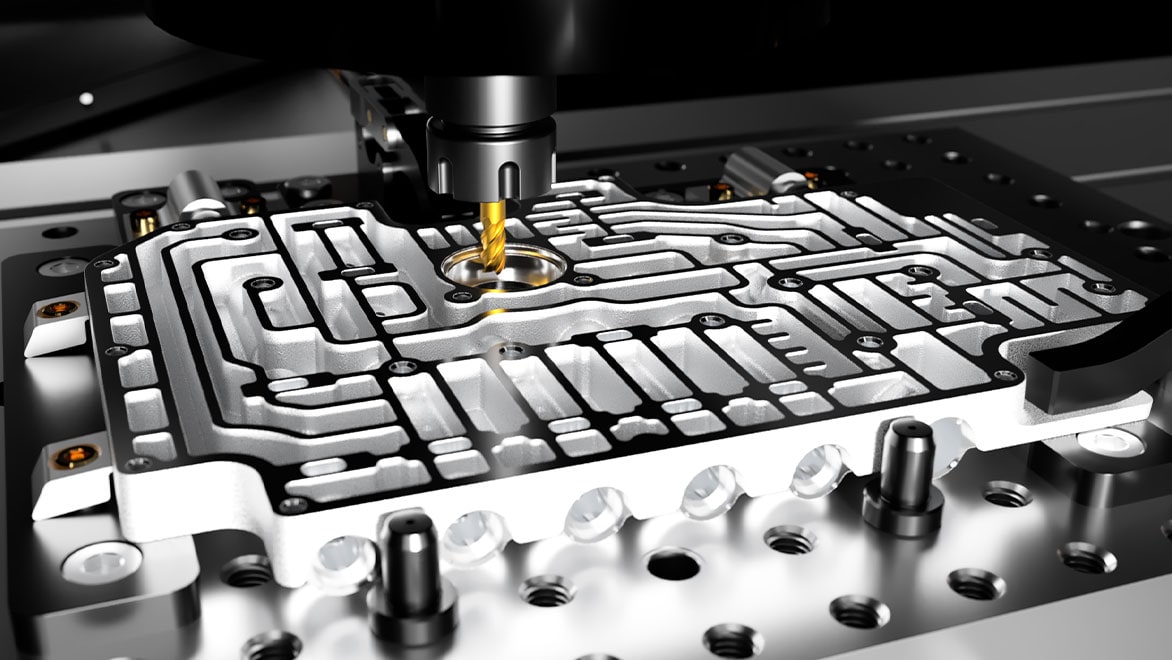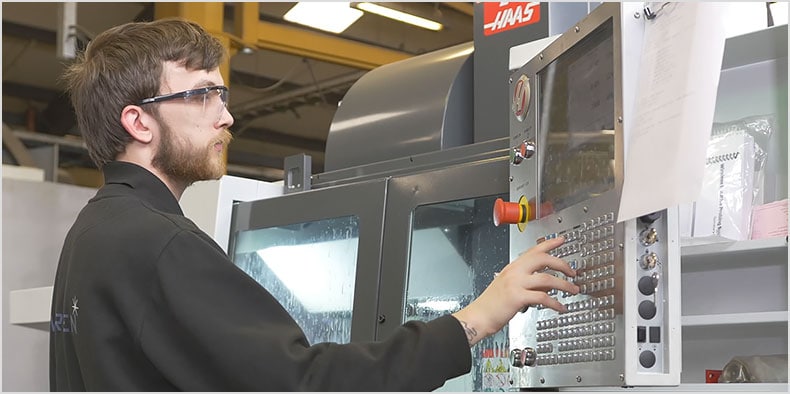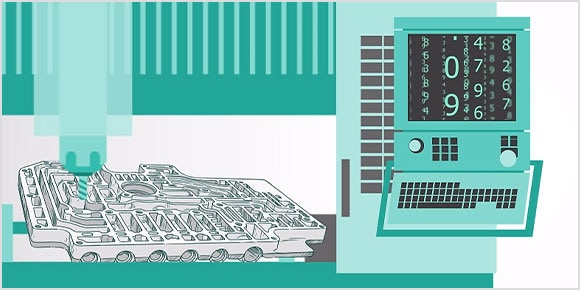CNC machining automation enables manufacturers to achieve repeatable processes across CNC machining operations with technology such as CAM software. Software for CNC machining automation provides manufacturing engineers with offline programming and machine simulation capabilities to ensure parts are ready for manufacture with minimal human intervention.
CNC machining automation
What would you do with 50% more machining capacity?
Achieve repeatable processes across CNC machining operations. Remove manual CNC practices to increase manufacturing output, improve operational efficiency, and enable increased innovation.

Reduce non-value add processes
Did you know customers are willing to pay 20% more for personalized products? CNC machining automation can reduce non-value add processes to help you make higher performing products.
CNC machining automation for manufacturing engineers
Are you a manufacturing engineer responsible for developing, owning, and improving the CNC manufacturing process? CNC machining automation can help you achieve the following:
-
![Manufacturing engineers: Reduce defects and nonconformities]()
Reduce defects and nonconformities
Need to improve product quality? Quest Industries automated EDM processes to improve part quality and increase machine capacity by 50% with Autodesk.
Image courtesy of Quest Industries
-
![Manufacturing engineers: Increase manufacturing throughput]()
Increase manufacturing throughput
Fed up with delays from manual CNC processes? Through digital manufacturing, Warren Services improved productivity by 50% with no loss in quality or accuracy.
Image courtesy of Warren Services
-
![Manufacturing engineers: Improve time to market]()
Improve time to market
Want to reduce lead times with lights out machining? Discover how Formaplex achieved 24/7 machine utilization by automating manual processes with Autodesk technology.
Image courtesy of Formaplex
CNC machining automation for manufacturing directors
Are you a manufacturing director tasked with overseeing all manufacturing operations to meet OEE, deadlines, and quality standards? Explore how CNC machining automation can help your business improve operational efficiency and enable increased innovation.
-
![Manufacturing directors: Reduce defects and nonconformities]()
Reduce defects and nonconformities
A leading automotive OEM automated machine setup to make 100% first-off production parts within tolerance, significantly improving its operational efficiency.
-
![Manufacturing directors: Improve time to market]()
Improve time to market
Bright Engineering freed up capacity to meet 50% more demand and reduce programming times by 50%. Learn how to lower your production cost and get your products to market faster.
-
![Manufacturing directors: Increase manufacturing throughput]()
Increase manufacturing throughput
Increase your manufacturing throughput by 4,780 hours/year like Trane Technologies by overcoming non-value add processes to improve operational efficiency.
-
![Manufacturing directors: Reduce non-value add processes]()
Reduce non-value add processes
72% of products fail to hit their profit targets. Discover how to monetize innovation by reducing non-value add processes through CNC machining automation, so you can be one of the 28%.
Talk to Autodesk about CNC machining automation
Contact us today and our advanced manufacturing experts will be in touch to help you improve operational efficiency and enable increased innovation.
FAQ
A computer numerical control (CNC) machine is used in manufacturing to convert stock material into finished components for industries, including aerospace, automotive, medical, consumer goods, industrial machinery, and more.
CNC stands for “computer numerical control” (or “computer numerically controlled”) and represents the use of computerized systems to control the movement and function of the mechanical elements of the machine.
A CNC machine tool converts an initial piece of material into a finished product. CNC machines include milling, additive, and hybrid machines, as well as routers, laser, or waterjet cutters. Most CNC machines support a subtractive manufacturing process (the removal of material from the initial stock); an additive manufacturing process (the deposition of material onto the initial stock–that is, 3D printing); or hybrid manufacturing (a combination of both additive and subtractive processes). A CNC machine uses numerical code (NC) data files to control the motion and function of the machine. These files are generally produced using computer-aided manufacturing (CAM) software and are configured to include commands that tell the machine what to do.
CNC machines are well suited to automation as they carry out tasks with high levels of accuracy and repeatability. Traditionally, these machines were programmed by a human operator manually entering the machine commands. This “manual programming” may be acceptable for simple machining tasks but is not suitable as the complexity of the parts being made increases. The simplest way to automate a CNC machine is to use CAM software to produce NC code that tells the machine what to do. As the NC code can be repeated, CNC machines can be used to produce parts in large numbers. More advanced automation, such as the use of robots and palletization systems, can allow CNC machines to operate for longer periods of time with minimal human intervention, resulting in increased levels of productivity.
Advanced manufacturing considers the use of innovative technologies to create better quality products in a smarter, more cost-effective way. Examples of advanced manufacturing technologies include additive manufacturing (such as 3D printing, powder-bed laser printing, directed energy deposition, or fused filament fabrication); advanced materials (such as composites and exotic alloys); and automation (such as robotics, process simulation, and verification, as well as cloud-based artificial intelligence). In all cases, advanced manufacturing aims to allow better quality products to be made, and done so faster, using fewer natural resources, with lower levels of waste, and with greater flexibility to adapt to meet changing customer needs.
Traditional manufacturing relies on manual processes that depend on an abundant supply of skilled workers to design components, devise how they should be manufactured, and ensure accuracy of the production process. Relying on human workers increases inconsistent production quantity and quality and limits the manufacturer’s ability to improve how products are manufactured. Advanced manufacturing uses current technologies and processes so manufacturers can produce components to suite their requirements. It embraces technologies such as up-front simulation and verification, AI, and additive manufacturing. These advances positively impact the parts that are being made–allowing them to be made stronger, lighter, faster, cheaper, while also using fewer natural resources with reduced levels of waste. Advanced manufacturing also enables mass customization, allowing products to be made that are more suited to the customer’s individual needs, helping these higher value products to be brought to market faster. And it allows the manufacturers behind them to gain a competitive edge, grow their market share, and be more successful.







